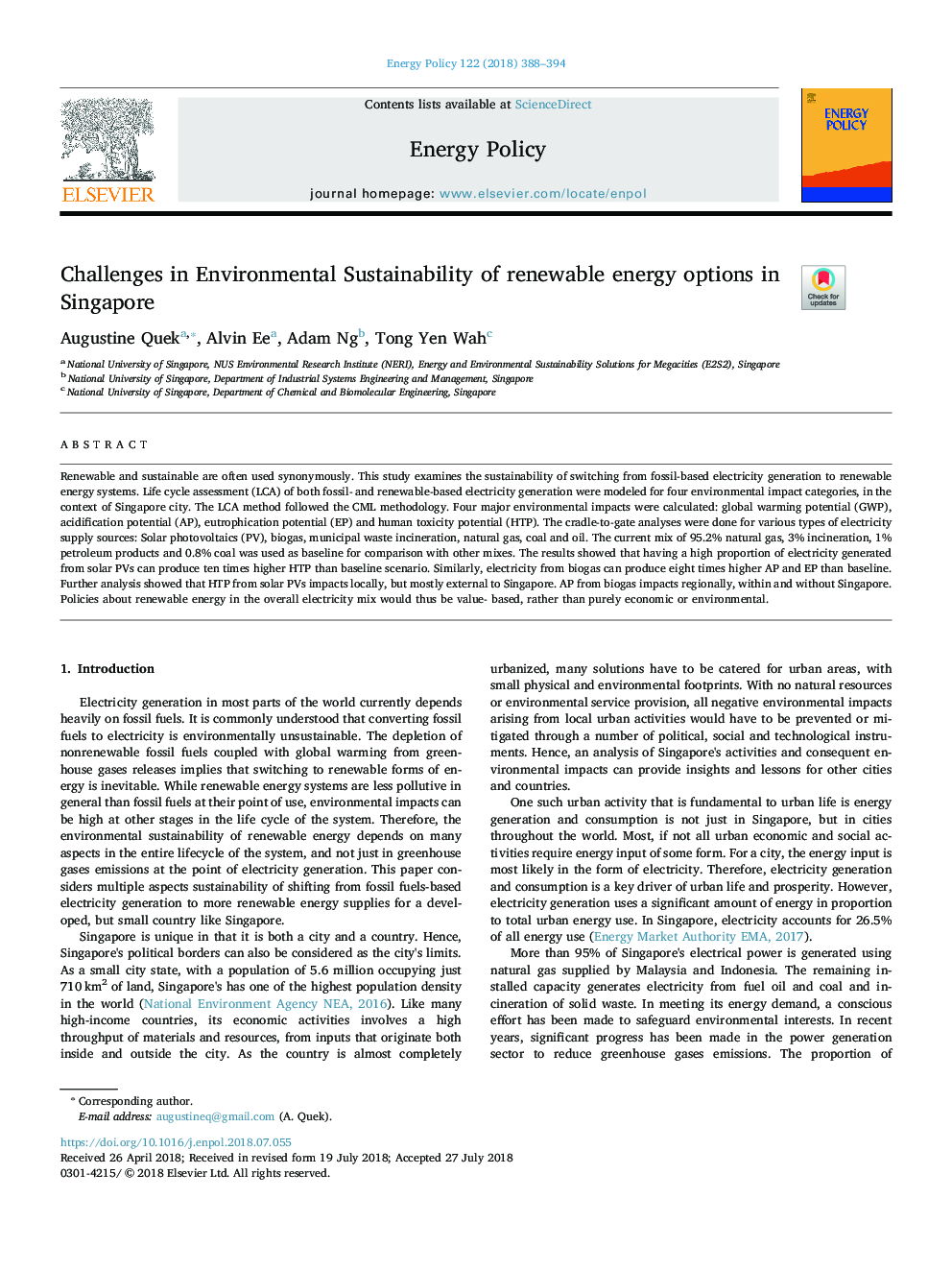| Article ID | Journal | Published Year | Pages | File Type |
|---|---|---|---|---|
| 7396693 | Energy Policy | 2018 | 7 Pages |
Abstract
Renewable and sustainable are often used synonymously. This study examines the sustainability of switching from fossil-based electricity generation to renewable energy systems. Life cycle assessment (LCA) of both fossil- and renewable-based electricity generation were modeled for four environmental impact categories, in the context of Singapore city. The LCA method followed the CML methodology. Four major environmental impacts were calculated: global warming potential (GWP), acidification potential (AP), eutrophication potential (EP) and human toxicity potential (HTP). The cradle-to-gate analyses were done for various types of electricity supply sources: Solar photovoltaics (PV), biogas, municipal waste incineration, natural gas, coal and oil. The current mix of 95.2% natural gas, 3% incineration, 1% petroleum products and 0.8% coal was used as baseline for comparison with other mixes. The results showed that having a high proportion of electricity generated from solar PVs can produce ten times higher HTP than baseline scenario. Similarly, electricity from biogas can produce eight times higher AP and EP than baseline. Further analysis showed that HTP from solar PVs impacts locally, but mostly external to Singapore. AP from biogas impacts regionally, within and without Singapore. Policies about renewable energy in the overall electricity mix would thus be value- based, rather than purely economic or environmental.
Related Topics
Physical Sciences and Engineering
Energy
Energy Engineering and Power Technology
Authors
Augustine Quek, Alvin Ee, Adam Ng, Tong Yen Wah,
